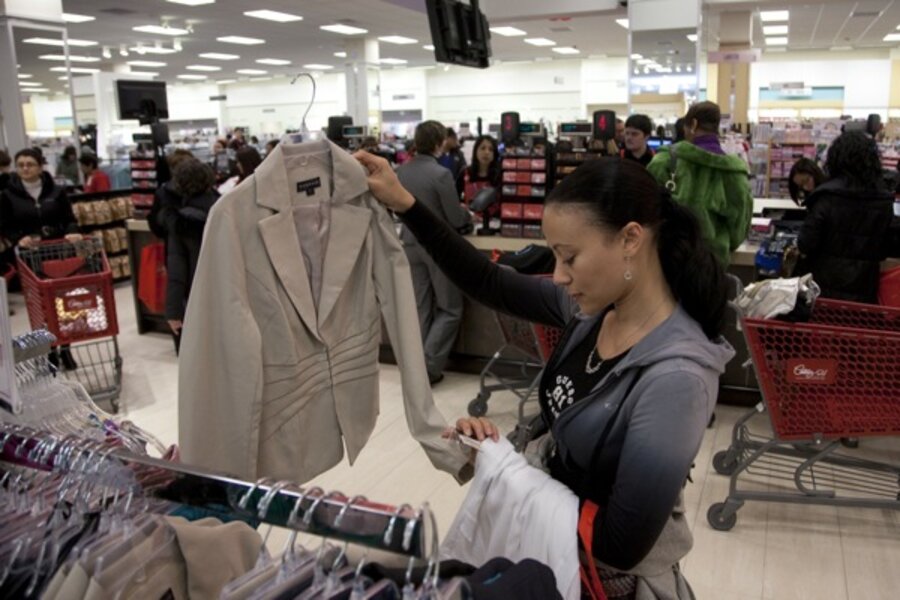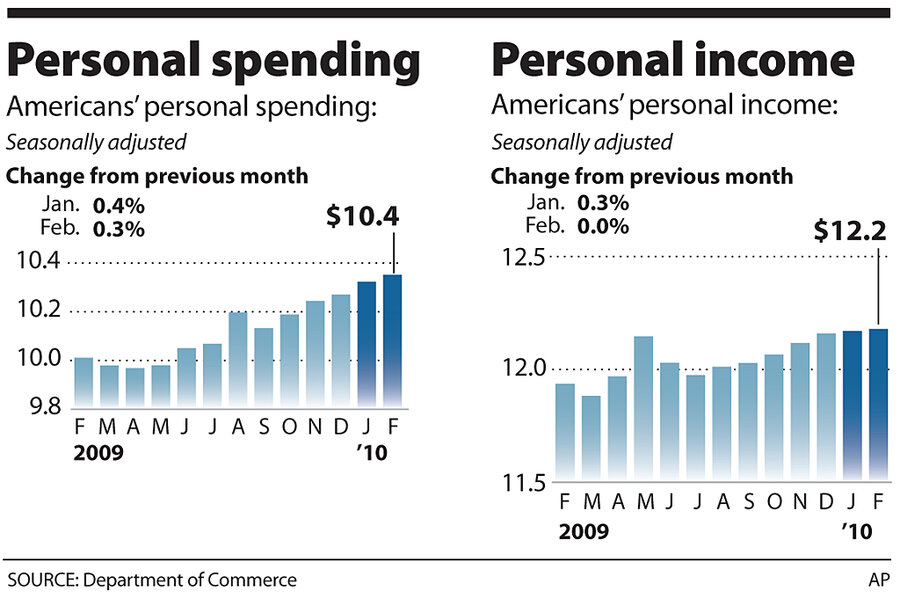Five months of higher spending, six months of flat income
Loading...
American consumers are alive and shopping.
Personal spending rose 0.3 percent in February, the fifth straight month of rising consumption and a signal of recovery for the US economy.
The news, reported by the Commerce Department Monday, came with some mixed signals. Inflation-adjusted incomes have been relatively stagnant for six months, despite the buoying effect of government stimulus programs designed to bolster slump-affected families.
Yet the gains in spending indicate some resilience as the economy struggles to get on course for sustainable growth.
"Overall, real consumer spending is on track to rise just above 3 percent [annualized] in the first quarter, which would be the strongest increase in three years and much better than the fourth quarter's 1.6 percent," economist Nigel Gault of IHS Global Insight says in a written analysis of the numbers. Spending "is being helped by a stabilizing labor market and, temporarily, by around $20 billion in refundable 'Making Work Pay' tax credits being paid out as workers file their 2009 tax returns."
Mr. Gault says personal income held flat in February, partly because bad weather in many parts of the US reduced the hours people worked. But he predicts a rise in March, as both employment and the length of the work week rise.
In fact, after two years of job losses, America may be near a job-market turnaround. Economists generally are predicting strong job growth in March, with perhaps 200,000 net jobs added to the economy.
In recent weeks, financial markets have shown more confidence about recovery, with the Dow Jones Industrial Average within striking distance of the 11000 mark during Monday trading. But investors and other forecasters are debating whether US growth will gain momentum or cool off. Negative factors include very high unemployment, a still-troubled housing market, and high debt levels for many consumers.
The optimistic case envisions positive feedback betweeen consumers and the job market. The more consumers spend, the more employers will be able to hire. The greater the hiring, the more money will be flowing into consumer bank accounts.
That's why the five-month string of spending gains is a positive sign. Though spending on big-ticket items so far has lagged behind other shopping, some economists say the durable-goods sector shows signs of recovery, too. "People aren't buying homes, but they are buying other durable goods again – furniture, building materials (putting up that garden shed), sporting goods, and electronic products and appliances," economist Peter Morici of the University of Maryland wrote in a Monday report.






